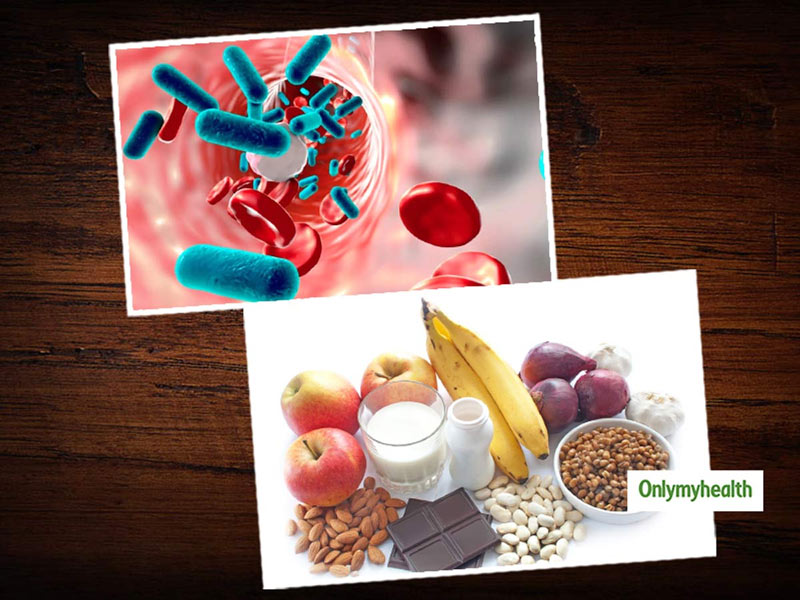
What is a bacterial infection? The bacterial infection is caused by one type single-celled microorganisms called bacterium. Such disease is a proliferation of a harmful strain of bacteria inside the body. Several bacteria can cause illness and infect any area of the body. Meningitis, food poisoning and pneumonia are just a few illnesses that may be caused by harmful bacteria. How long does a bacterial infection last? Signs persist more prolonged than the typical 11-15 days a virus tends to last. Fever is higher and gets worse rather than improving. What is the most common bacterial infection? Bacteria causing gastroenteritis and other stomach problems, such as E.Coli and salmonella, are most common. The most common bacterial infections are Food Poisoning, Tuberculosis, Pneumonia etc.
Table of Content:-
How does a person get a bacterial infection? Is it contagious?
The most common way is contaminated food or water. Besides, one can get a bacterial infection from another person or the environment. It occurs when there is a transmission of bacteria. A person gets a bacterial infection by getting exposed to bacteria from other people, from drinking contaminated water, eating contaminated food or through the environment. Many bacterial infections can be transmitted from person to person, which means that they are contagious. How can bacterial infections occur? Kissing, touching and including all the close contact with the person who has a bacterial infection.
Also Read: Viral Infections Cure: Fight Viral Infections With These 7 Antiviral Herbs
Here are some signs of bacterial skin infection:
- Pus leaking out of the cut
- Injured red skin
- Sores or pimples that look like blisters.
- Pain, swelling and fever that gets worse after a few days.

What are the signs and treatment of bacterial infection? Explains Dr Kapil Kochhar, Director - Department of Minimal Access Surgery, Fortis (Noida)
- Signs of bacterial infection - You can experience general symptoms, such as fever, chills and fatigue. You can also identify redness or swelling on visible parts of the body such as skin, throat, or ears. General symptoms of a bacterial infection are fever, headache, feeling tired and nausea.
Also Read: Food Wastes That Can Be Re-Used To Make Delicious Meals
- Treatment of bacterial infection – Some bacterial infections can be resolved quickly even without the requirement of treatment. But, in some cases, bacterial infections need to be treated with antibiotics. The treatment takes place through antibiotics for 3 to 5 days, depending on the nature of the illness.
FAQs about types of bacterial infection
- Bacterial infections: Learn more about their different types- bacterial UTIs (urinary tract infections) and bacterial food poisoning. Bacterial cellulitis, strep throat and bacterial vaginosis. Gonorrhoea, chlamydia and syphilis.
- Can a blood test detect bacterial infection? Blood cultures are used to diagnose the presence of fungi or bacteria in the blood, to guide treatment and to identify the type present. To identify a blood infection, testing is used, which tells that it can lead to sepsis, a severe and life-threatening complication.

- How can you kill bacteria in your body? Get your probiotics by eating lots of prebiotic foods. Cut out processed foods and drink green juice. Limit antibiotics as much as you can.
- What foods to avoid while on antibiotics? Calcium dietary supplements could also work dampen the effect of antibiotics. Hence dairy products should be avoided. It includes butter as well as milk, cheese and yoghurt.
How are bacterial infections different from viral infections? Explains DR. PARINITA KAUR, Consultant, Internal Medicine, Aakash Healthcare Super Specialty Hospitals
The critical difference between bacterial and viral infections are in terms of the pathogen -- bacterium in the first and viruses in the second. The other key difference is in treatment -- while antibiotics can treat a bacterial infection, viral treatments are treated with antivirals. It occurs when there is a spread of a harmful strain of bacteria on or inside the body, which can infect any area of the body. The Viral Infection occurs when there is a presence of the virus in the body.
Also Read: Moringa Leaves Health Benefits
Stomach bacterial infection
- How do you get a bacterial infection in your stomach? Stomach bacterial infection is also known as food poisoning, which can result from poor hygiene. Infection can also occur after consuming the toxic substances bacteria produce and close contact with animals.
- Symptoms of stomach bacterial infection by Dr Kapil Kochhar: Vomiting and nausea, high fever, belly pain and cramping, bloody diarrhoea, electrolyte imbalance and dehydration.
- How long does bacterial stomach infection last? Explains Dr Parinita Kaur Bacterial stomach infection signs may appear within 1 to 3 days ( depending on the cause) and can range from mild to severe. Signs usually last just 1 or 2 days, but seldom they may continue as long as ten days.
- What to eat during a bacterial stomach infection? Here are some foods to eat, rice, kinds of pasta, eggs, sugar-free cereals, cooked vegetables, fresh fruits. You can also consume low-fat cooked fish, lean meats prepared with little fat and fruits canned in their juice.

What is a natural antibiotic, and how is it effective/useful?
Here are some most potent natural antibiotics Dr Kapil Kochhar:
- It is nothing but spices and herbs that are directly available from nature which has the properties of reducing the function and spread of unwanted microbes. There is nothing called natural antibiotics as bacteria thrive in nature. However, there are elements in nature that can help prevent infection. Spices like cloves, black pepper and vegetables such as garlic are known for their preventive properties. Some of the most potent natural antibiotics also include ginger, honey, turmeric, neem etc.
Also Read: Top 5 Foods In Your Kitchen Cabinet To Boost Your Metabolism

- The preventive qualities of food items such as honey, turmeric, lemon, and ginger, to name a few, helps our bodies to fight the pathogen if its enters the body and reduce the impact of the infection. However, these immune boosters need to be taken continuously and not for a few days. The natural antibiotics can perform without causing any side-effects to your body and can completely wipe out the presence of unwanted microbes compared to regular antibiotic medications.
How do you fight a bacterial infection naturally? Here are the best antibiotic foods by DR. PARINITA KAUR
- One can fight a bacterial infection naturally by the intake of natural antibiotics such as Garlic, Ginger, Turmeric, Neem and natural antibiotic foods such as Cabbage, Fermented Food, Extra Virgin Coconut Oil, Grapefruit Seed Extract, Raw Apple Cider Vinegar etc.
- Honey: Tracing back to ancient times, honey is known as one the oldest known antibiotics. Do you know that it can be used honey as a skin protectant and natural antibiotic? Honey contains hydrogen peroxide that values for its antibacterial properties.

- Good nutritious food with the inclusion of fruits and fresh vegetables with antioxidant properties help to fight bacterial infections. Also keeping the environment around yourself clean and hygienic prevent one from acquiring bacterial infections.
Also Read: Peach Fruit Leaf For Stomach Worms: Know How To Treat Intestinal Worms As Told by Baba Ramdev
How can you get rid of a bacterial infection without antibiotics?
"Yes, one can get rid of a bacterial infection without antibiotics. If the symptoms are mild, then most people can fight off a bacterial infection entirely. One can develop immunity against bacterial infection, but once infected, and only antibiotics can kill the pathogen. Without using antibiotics, several mild bacterial infections get better on their own. Do you know that antibiotics don't work for viral infections? For instance, and most sore throats, coughs, flu and colds" says Dr Kapil Kochhar.
Read more articles on Healthy Diet
Also watch this video
How we keep this article up to date:
We work with experts and keep a close eye on the latest in health and wellness. Whenever there is a new research or helpful information, we update our articles with accurate and useful advice.
Current Version
